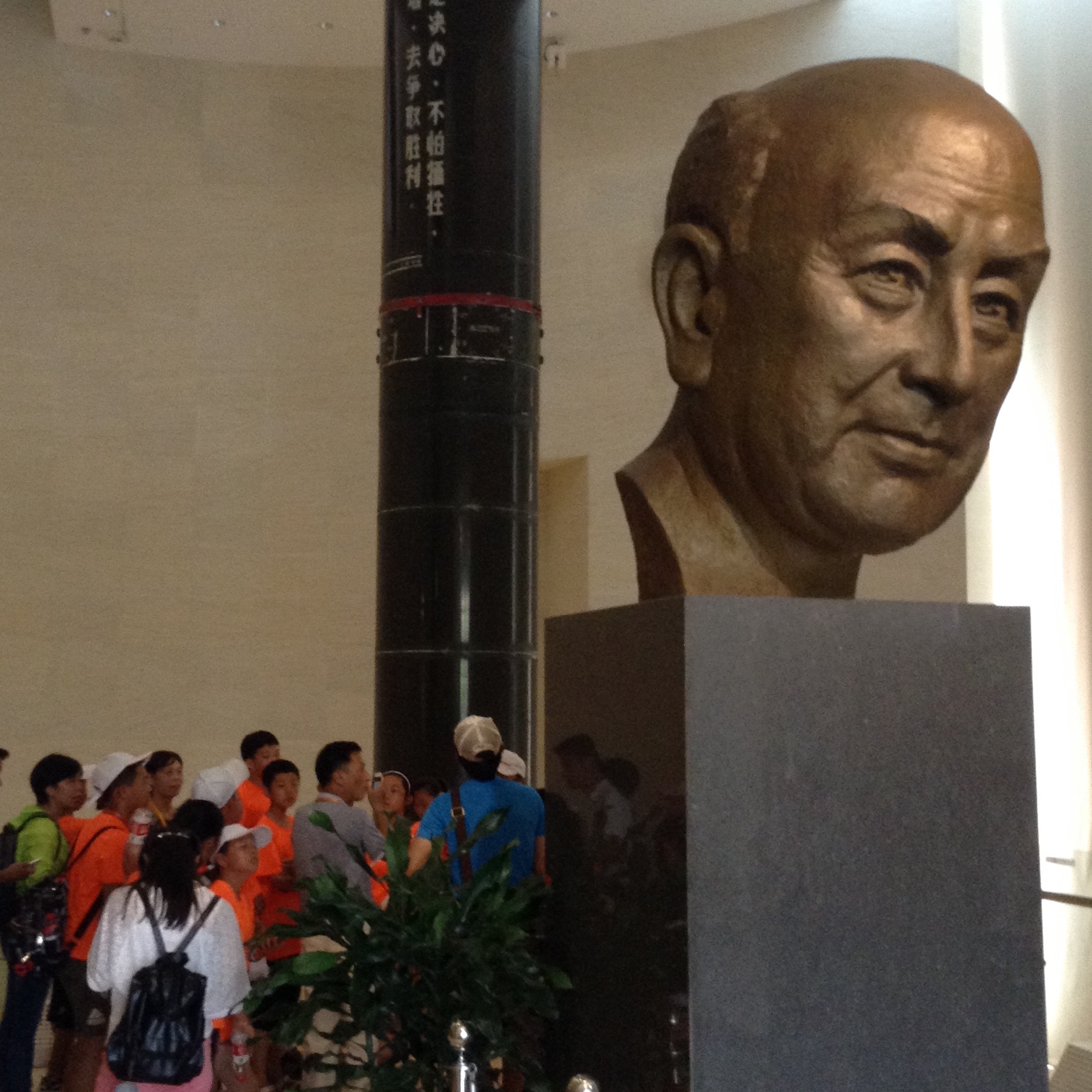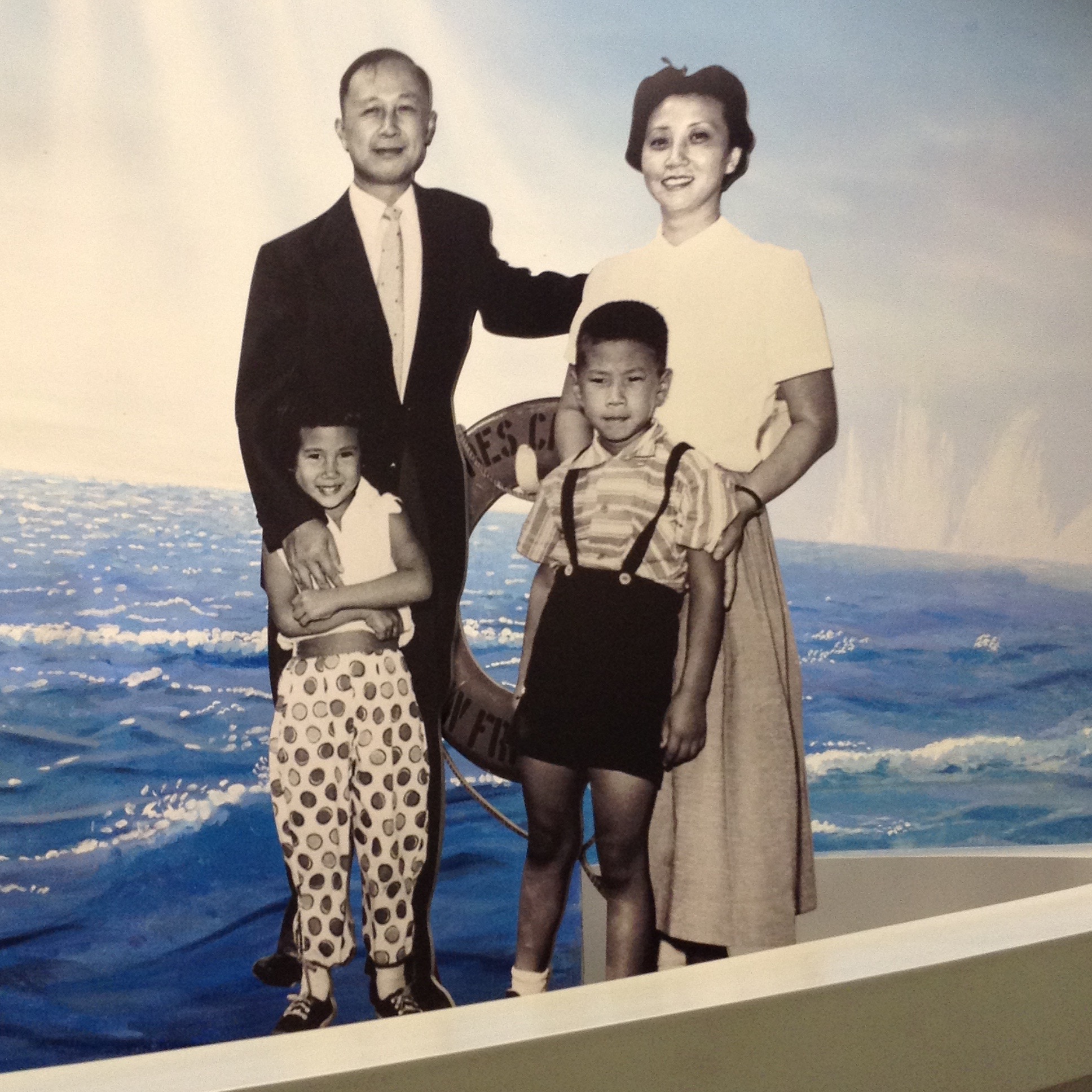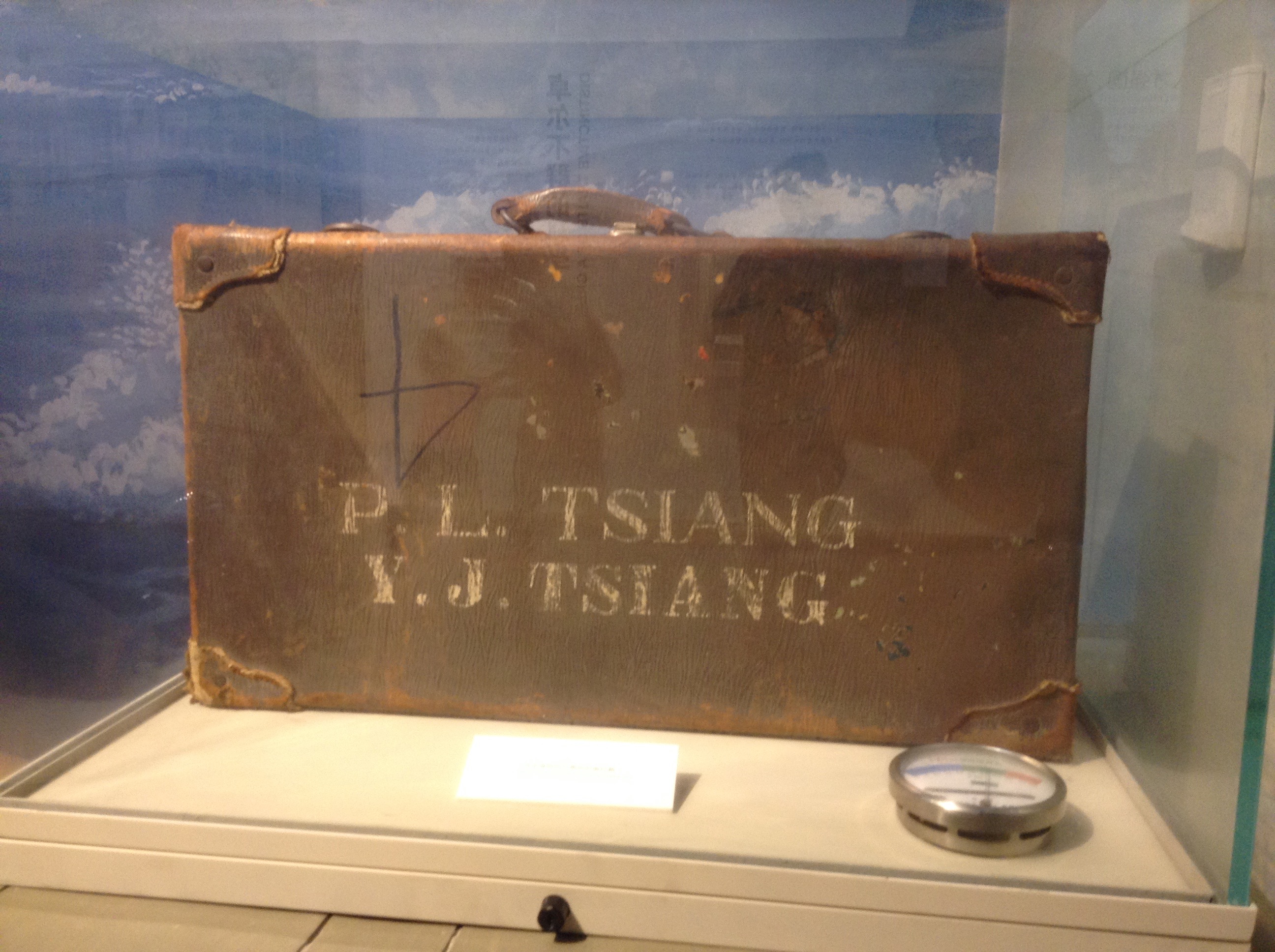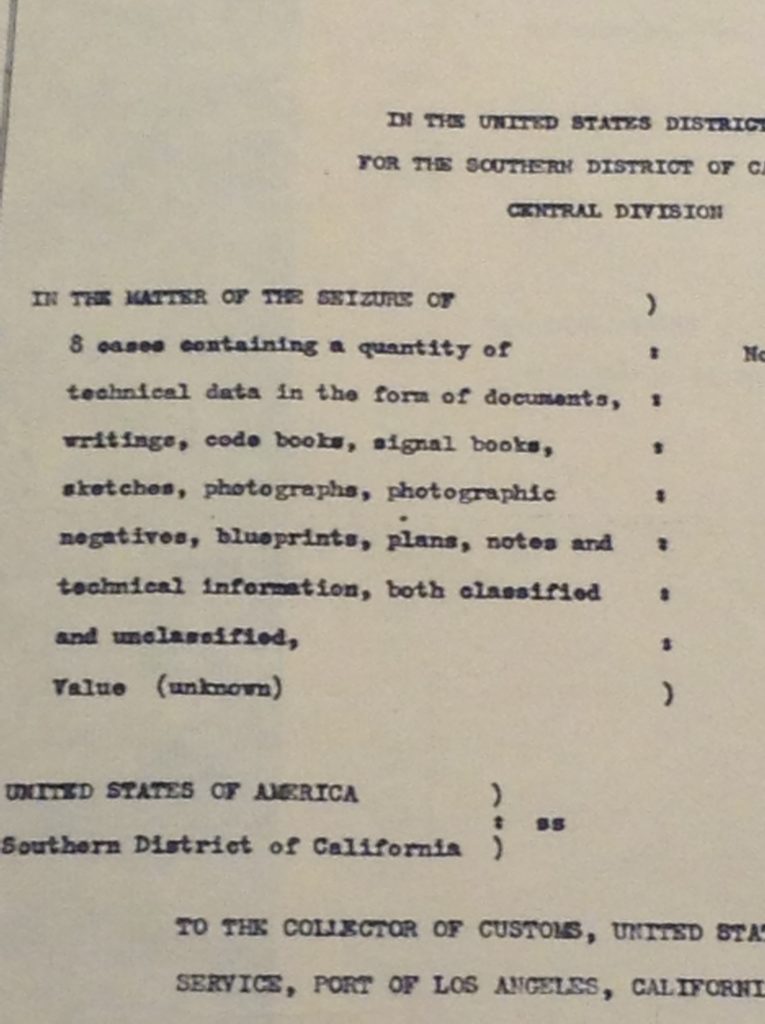
Representing the Life of an Outstanding Chinese Aeronautical Engineer: A Transnational Perspective
Technology’s Stories vol. 6, no. 2 – DOI: 10.15763/jou.ts.2018.03.16.04
PDF: Krige_Representing a Life
In 1955 a brilliant young engineer who had left China in the 1930s returned home to put his knowledge at the service Mao’s new revolutionary regime. Qian Xuesen (better known in the West as Hsue-Shen Tsien) graduated from Jiao Tong University in Shanghai in 1934, and went on, via MIT, to complete his PhD at Caltech in 1939. He stayed in the United States during WWII, contributing to the development of the Jet Propulsion Laboratory in Pasadena. He also accompanied his mentor, Theodore Von Kármán, the world renowned aerospace engineer, into Europe in 1944-45 to assess rocket/missile development in Britain, France and Germany. In 1950 Qian Xuesen’s application to return to China was refused and he was placed under constant surveillance, accused by the American authorities of being sympathetic to communism. He and his family were eventually allowed to set sail for China in 1955 in exchange for U.S. prisoners of war captured during the Korean conflict. He dedicated the rest of his life to building the country’s missile, atomic bomb and space programs, dying at the age of 97.
Today Qian Xuesen is celebrated as a national hero in China. Hundreds of people flock every month to the library and museum dedicated to his life and works that occupies a new custom-built exhibition hall on the campus of Jiao Tong University in Shanghai. It opened in 2011 on the 100th anniversary of his birth. A comprehensive collection of documents, including photographs, official papers, and personal memorabilia is complemented by a number of impressive artifacts. These include the D2A 1500-km medium range missile, developed by Qian Xuesen and his team for the PRC in November 1965, that is the centerpiece of the exhibition. Over 21 meters long, the missile is three floors high, reaching almost to the ceiling (see Figure 1).

Figure 1. Bust of Qian Xuesen and his medium-range ballistic missile. This and all other photographs were taken by the author.
It is accompanied by scale models of subsequent generations of missiles, all of which were fitted with nuclear warheads, and a 1:1 model of China’s first satellite that Qian Xuesen was involved with in the 1970s. The accompanying panels written in Chinese and English celebrate the engineers’ personal and intellectual qualities, including his love of art and music, and emphasize his dedication to the nation, to Marxism and dialectical materialism, and to the Party who provided him with the resources he needed.
To Western eyes, the exhibit is marred by a heavy dose of Communist propaganda that emphasizes Qian Xuesen’s nationalist fervor, his growing dedication to Marxism, and the immense support of the Party for this “Scientist of the People.” That said, it is not surprising that an exhibition that celebrates national technological achievements promotes a political and ideological agenda. Those in the West often do so too, even if their approach is more subtle. Outspoken opposition to the original exhibition of the Enola Gay at the Smithsonian Institution as “un-American” and “close to treason” ( which forced the Director to remove any material that could be read as a criticism of the atomic bombing of Hiroshima) emphasizes that national museums are expected by publics and politicians alike to reinforce positive national self-images, and can fall prey to nationalistic sentiments.[1]
That being so, there are other, more interesting things to say about the exhibit in Shanghai especially if we treat it from a transnational perspective. Zuoyue Wang has published an impressive body of work on Chinese scientists, including Hsue-Shen Tsien, as transnational actors.[2] My aim here is not to add more information to what he has told us, but rather to analyze the representation of Qian Xuesen in this permanent exhibition as an exercise in transnational history. The reflections that follow draw on insights from a workshop on writing the transnational history of science and technology, that I organized at Georgia Tech in November 2016.[3] These helped me highlight certain features of the exhibition, which I visited many times while teaching at Jiao Tong University in summer 2017.
An exhibition on the transnational circulation of knowledge
Transnational history is a “way of seeing” rather than a definitive method.[4] It is a reaction against a widespread tendency to write histories whose “objects” are circumscribed by the boundaries of the nation-state. It speaks in terms of movement, flow and circulation across borders, it studies networks and connections that criss-cross disparate geographical regions of the globe, and it is sensitive to the fragility of national identity and to the hybridity of its actors. The approach has added new luster to many areas of historical writing, notably immigration and diaspora studies. Indeed given the plethora of connections that come into focus when we step back from the national frame, transnational history risks becoming “more expansive in its meaning than precise in its application.”[5] The workshop in Atlanta started from the premise that historians of science and technology could make a unique contribution to this genre by focusing on the movement of knowledge across borders. As Jim Secord remarked in a widely-cited article published over a decade ago, “How does knowledge circulate?” is one of, if not the, central question of the history of science.[6] It is of considerable importance to the history of technology too, I would add.
The transnational circulation of knowledge was a central theme of the exhibit on Qian Xuesen. It not only highlighted the flows of different forms of knowledge, whether embedded in people, like Qian Xuesen himself, or in a multitude of other platforms, from books to blueprints that travelled with him. The curators also explicitly foregrounded his movement from one country to the next in a series of panels dedicated to his voyage back to China (see Figure 2).

Figure 2. Sailing for China.
Indeed they made a distinct effort to distinguish what Qian Xuesen learned while he was in America from the knowledge he deployed in his subsequent career. They also contrasted the way he and his family lived in the West with his lifestyle once back in China. Their emphasis on his transition between different worlds, separated geographically, politically and ideologically had distinct pedagogical objectives (see later). It also provides us with useful raw material for thinking through the challenges posed by transnational history.
The scope and depth of Qian Xuesen’s knowledge was immense and much of it moved with him across the Pacific. We are shown a library that was well-stocked with books and periodicals, and see that he was a regular reader of semi-popular literature, much of it in Chinese, of course, but including publications like Scientific American and Science. We are told that his network included people in many walks of life: his archive contains 10,000 of his letters. His Caltech PhD certificate recognized his “advanced studies in aeronautics and mathematics” and “investigations on the theory of fluids.” Qian Xuesen’s erudition went far beyond that. He thought in Hughesian terms of what we now call an interlocking technological system. He drew on Norbert Wiener’s cybernetics to generalize the control theory of engineering. He implanted operational research and scientific management in China. He developed techniques for strategic planning: one striking panel illustrates the “flow chart of the US Polaris missile development scheme” that used the PERT (Program Evaluation and Review Technique) (see Figure 3).

Figure 3. PERT Chart for Polaris.
He was also the first to “introduce and apply PERT to the scientific management of China’s space program” in the 1960s. These diverse theoretical and applied engineering knowledges, as well as management and planning skills were mobilized in every sector of China’s military arsenal. Qian Xuesen is credited with having played a major role in developing land- and sea-based missiles, as well as also atomic weapons, nuclear-powered submarines, and satellites. In short a great deal of what Qian Xuesen learnt in the United States was “transferred” with him when he went home. Knowledge acquired abroad provided much of the bedrock on which Chinese technological strength in military and civil domains was built.
Enter the regulatory state
Secord has mentioned that the vast global circulation of knowledge in journals, laboratory visits, workshops, and conferences can give one the impression that “knowledge circulates by itself” in a frictionless global space. Our workshop challenged this idea head-on. Indeed we emphasized that the transnational circulation of knowledge is a social accomplishment. It engages a range of mundane national administrative procedures that are normally taken for granted but which are part and parcel of the process of international travel: one cannot move from one country to another without valid travel documents. (The tragic plight of immigrants struggling to make their way into Europe today makes this point forcefully.) This dimension of Qian Xuesen’s movement is captured in the exhibit of the family’s cruise ticket on the USS President Cleveland from Japan to Hong Kong in September 1955 as well as some of the luggage that they carried with them (see Figures 4 and 5).

Figure 4. Cruise tickets for the Tsien family.

Figure 5. Luggage used on the ocean crossing.
There is also a picture of eight cases of luggage being impounded by U.S. Customs Officers in Los Angeles in 1950, along with the official court order restraining their shipment (see Figure 6), and an extract from the official records confirming that Qian Xuesen had reported to the American authorities every month in 1953.

Figure 6. Court order impounding Qian Xuesen’s luggage.
It is generally believed that this five-year embargo on Qian Xuesen’s international travel was imposed because he was suspected of having communist sympathies. The Korean War had broken out, McCarthyism was gaining momentum and a domestic anti-communist witch-hunt was underway. This is not false. But it is only part of the story. In fact there is no reference to his putative communist sympathies in the order calling for his luggage to be seized. Qian Xuesen’s departure was restrained with reference to three Acts. Two—the Neutrality Act and the Espionage Act — were passed during WWI. The third, the Export Control Act, was passed in 1949. They were all invoked explicitly because his luggage contained sensitive technical data that was leaving the country. The nature of this data was clearly specified as we can see in Figure 6, above.
The Order referred to the seizure of “8 cases containing a quantity of technical data, in the form of documents, writings, code books, signal books, sketches, photographs, photographic negatives, blueprints, plans, notes and technical information, both classified and unclassified.” As Mario Daniels has emphasized, the regulations imposed by the national security state on transnational travel targeted not only communists; they were selectively used against knowledge-bearing foreign nationals who sought to leave the U.S. for an enemy country. And they targeted both the individual and the multiple platforms in which his knowledge was materialized, be it classified or unclassified.[7] Export controls have received very little attention by historians of science and technology. They are one of the most unglamorous, yet crucial instruments available to the national security state to restrict the transnational movement of knowledge from America to a foreign country. Their impact is not only felt by American business but increasingly in academia too. The display in Shanghai is a timely reminder that knowledge does not flow “by itself” across borders, particularly if it is deemed to be related to national economic and military security
Hybridity and nationalism
Transnational circulation can blur national identity by stimulating ongoing interaction with different cultures and ways of life to one’s own. The concept of hybridity provides a way of thinking about the social construction of a self by transnational actors that is at ease in quite different cultures, though perhaps not at home in any. The dilution of national identity that it captures can be lived as a loss, or perceived to be an asset. The latter was the view of the British novelist Salman Rushdie who described his famous novel The Satanic Verses as celebrating “hybridity, impurity, intermingling, the transformation that comes of new and unexpected combinations of human beings, cultures, ideas, politics, movies, songs […] Mélange, hotchpotch, a bit of this and a bit of that is how newness enters the world,” he proclaimed (Rushdie’s emphasis).[8] In our case we need to look for “unexpected combinations” of two kinds. Firstly, there is the knowledge itself acquired by Qian Xuesen in two very different cultural settings, capitalist America and Communist China. Secondly, there is the hybridity of his personae, the mélange of American and Chinese characteristics that, we expect, was produced by his spending his most formative years in the United States. How does the exhibit handle Qian Xuesen’s “hybrid” knowledge? And how does it navigate between recognizing Qian Xuesen’s internationalism and his debt to knowledge acquired in the United States while also celebrating him as a national hero?.
These tensions are not unique to this exhibit. They pose a challenge to the policy of many an emerging technological power whose government seeks to foster national self-reliance — an ambition that was central to the Chinese leadership in the 1960s, when it was isolated by both the West and the Soviet Union. More generally all national scientific and technological histories have to grapple with the same issue from a methodological point of view.
One way the exhibit handles the hybridity of his knowledge is to treat Qian Xuesen’s career after he came back to China as evolving from a phase of copying based on past experience to one of innovation inspired by the local context. Thus the step he took from the first short-range missile to the next generation medium-range ballistic missile that is on view in the central hall involved a “significant leap from imitation to independent research and development” under “the guidance of the central government.” This is disingenuous. By describing the change undergone as a “leap” the text implies that the knowledge and experience acquired in the United States was surpassed in the different intellectual and political context in China. In practice it is well-nigh impossible to disentangle the provenance of knowledge acquired in different countries in a collaborative R and D project, as I have shown elsewhere.[9] There is no way to reconcile the hybridity of knowledge that circulates transnationally with a concept of national self-sufficiency that implies complete national autonomy. Globalization implies interdependence. A richer concept of national achievement that accepts that premise still needs to be constructed.
What of the “threat” to his national identity that is posed by Qian Xuesen’s transnational experience? How is the potential Americanization of his lifestyle rendered compatible with constructing an image of him as a Scientist of the People? By a narrative that traces his identification with China back to his earliest childhood, and that treats his time abroad as a detour on a long road that began and continued in his homeland. “I am a Chinese,” Qian Xuesen is quoted as saying. “I never planned to live in the United States for my whole life.” In fact he always intended to come back home; when he went to the U.S. in 1935, one panel tells us, it was “with the hope to save the nation and invigorate China by applying modern science and technology.” Come 1950, he is quoted as saying, “when I knew that New China had been founded, I thought the time had come for me to return to my homeland.” “All I did in the U.S.,” he said, “was to make preparations for doing something useful for my countrymen after my return to China.” Knowledge acquired abroad is denationalized; knowledge developed in China in indigenized.
The Museum curators were sensitive to the lure that life in the United States might have had for Qian Xuesen. They contrasted the comfortable life that he and his family lived at Caltech with the far more modest life that he led, even as leader of China’s space program. Several strategies are deployed to contrast the “prosperity” of his Western way of life with the humble, anonymous man of the people that he always was. Qian Xuesen is said to show “no special interest in material benefits.” Pictures of his simple home and of the blue “Mao” jacket and khaki military trousers that he and his contemporaries always wore contrast with the Qian Xuesen family’s dapper dress and the jacket and tie that he wore while in the West. (See Figure 7 and Figure 2 above)

Figure 7. Qian Xuesen’s ‘Mao’ suit.
His youth is presented as a time in which the foundations of a solid Chinese identity were laid. He learned the poetry of the Tang and Song dynasties at an early age. His primary school teacher’s lectures on patriotism are said to have impressed him. His identity thus formed, his time in America did little to dissolve it. Qian Xuesen claims to have never been seduced by the western way of life. He was not attracted by the comforts of life in Pasadena, he was embarrassed by the perks that came with his exalted scientific status. “I have a better home than the people with whom I returned to China from the United States on the same ship,” he said. “I often feel uneasy about this as this can be an indicator of me being alienated from the masses. I don’t want to see a gap between me and the scientific and technological workers at large.” “I am a scientist,” he insists, “and my goal in life is to serve the people.” Yes, he learnt and practiced his science and engineering abroad. However after the founding of the PRC, this “loyal devotee of the Communist Party of China,” whose faith in Marxism only grew stronger as he grew older, “dedicated his talents to his motherland and countrymen.” He put his “prosperous” life in California behind him, and returned to “his homeland, a poor nation that was underdeveloped in virtually all sections of economic life.” Qian Xuesen’s national identity is represented as “sticky,” a guiding thread defined by his personal and political commitment to the ideals of Communist China, the one that gave purpose to his transnational movement.
This robust nationalistic thread in the construction of Qian Xuesen’s identity is strengthened by the representation of the United States as an overbearing geopolitical power that is hostile to communist China, encircling it in the 1950s with an “Asia-Pacific military system, ‘the crescent-shaped ring’, targeted at China.” This critique is amplified, as mentioned above, by using original documents from American archives to highlight Qian Xuesen’s treatment at the hands of the U.S. authorities who put him under house arrest in 1950, seizing eight large suitcases of “technical data…” and impounding them in a customs shed at Los Angeles harbor.
This accumulation of images and statements, many of them attributed to Qian Xuesen himself, is surely not coincidental. It constitutes a sustained attempt to counter the subversive logic of a transnational approach that de-emphasizes the national in favor of the hybrid, and that blurs allegiances and boundaries that, on the contrary, have to be reinforced to construct Qian Xuesen as a patriotic citizen and role model for future generations of Chinese scientists and engineers.
There is surely a contemporary concern driving this attempt to make Qian Xuesen’s Chinese nationality “stick.” In the decade before the exhibition opened, from 2,500 to 4,500 students from China graduated annually with PhD’s in science and engineering from American universities (see Figure 8).

Figure 8. Annual variation in the number of Chinese nationals who earned PhD degrees in science and engineering at U.S. Colleges and Universities, 2003-2013. https://www.nsf.gov/statistics/sed/2013/data/tab26.pdf.
The United States wants to keep them in the country every bit as much as China wants them to come home. Indeed a program of financial incentives has been put in place by the Chinese authorities to attract the brightest and the best to return to the mainland after they have graduated and to put their knowledge at the service of their country of birth. Qian Xuesen is represented in the exhibition as a role model for them, a patriotic citizen who left his comfortable life in California behind him, especially after being treated unjustly by the American authorities, and who accepted the limitations of working in China to become “The Scientist of the People” and the mastermind of his country’s military power.
There are many possible readings of the exhibit dedicated to Qian Xuesen at Jiao Tong University. The curators have gone out of their way to assemble a very comprehensive collection of materials and to produce a detailed narrative that recognizes both Qian Xuesen’s long stay in the United States and the major contributions he made to China’s military strength. They have had the courage to face the dilemmas posed by celebrating a national hero who acquired so much of his knowledge in America when their country was “poor” and “underdeveloped,” as they describe it. Their willingness to take on that task rather than to simply gloss over Qian Xuesen’s sojourn in California is a tribute to their integrity. It also provides exceptional raw material for a transnational study of their subject. That study, that I have embarked on here, inverts the lens through which to read the life of Qian Xuesen. It takes the transnational as given and seeks to explain the role of the national in the exhibit. The curators took their subject to be a national actor through and through and sought to explain away the transnational dimensions of his career. They were subject to the logic of their mission. We are free to define opposing frameworks that turn their world upside down. Each approach has its own intellectual, institutional, ideological, and political dynamic.
John Krige is Kranzberg Professor, at the School of History and Sociology, Georgia Tech, Atlanta
Notes
[1] Otto Mayr, “The ‘Enola Gay’ Fiasco: History, Politics and the Museum,” Technology & Culture, 39:3 (July 1998), 462-473.
[2] Zuoyue Wang, “Transnational Science During the Cold War: The Case of Chinese American Scientists,” Isis 101:2 (June 2010), 367-377; Zuoyue Wang, “The Cold War and the Reshaping of Transnational Science in China,” in Naomi Oreskes and John Krige (eds.), Science and Technology in the Global Cold War (Cambridge: MIT Press, 2014). Iris Chang, Thread of the Silkworm (New York: Basic Books, 1995) is the standard biography.
[3] John Krige, ed., How Knowledge Moves: Writing the Transnational History of Science and Technology (University of Chicago Press, in press)
[4] C.A. Bayly, Sven Beckert, Matthew Connelly, Isabel Hofmeyr, Wendy Kozol and Patricia Seed, “AHR Conversation On: Transnational History,” American Historical Review, 111:5 (December 2006), 1441-1464; Ann Curthoys and Marilyn Lake, “Introduction” in Ann Curthoys and Marilyn Lake, eds., Connected Worlds. History in Transnational Perspective (Canberra: Australian National University Press, 2005), 1-20; Akira Iriye, “Transnational History,” Contemporary European History, 13:2 (June 2004), 211-222; Erik van der Vleuten, “Towards a Transnational History of Technology: Meanings, Promises, Pitfalls,” Technology & Culture, 49:4 (October 2008), 974-994.
[5] Bayly et al., AHR Conversation On, 441. See also Ian Tyrell, “Reflections on the Transnational Turn in United States History: Theory and Practice,” Journal of Global History, 4:3 (November 2009), 453-474.
[6] James Secord, “Knowledge in Transit,” Isis, 95:4 (December, 2004), 654-672.
[7] Mario Daniels, “Why and How Borders Matter to the Sharing of Knowledge: The Interplay of U.S. Visa Restrictions and Export Controls in the Cold War,” in Krige, How Knowledge Moves.
[8] Salman Rushdie, Imaginary Homelands: Essays and Criticism, 1981–1991 (London: Granta Books/ Viking, 1991), 394 (original emphasis).
[9] John Krige, “Hybrid Knowledge: The Transnational Co-production of the Gas Centrifuge for Uranium Enrichment in the 1960s,” British Journal for the History of Science, 45:3 (September 2012), 337-357.
